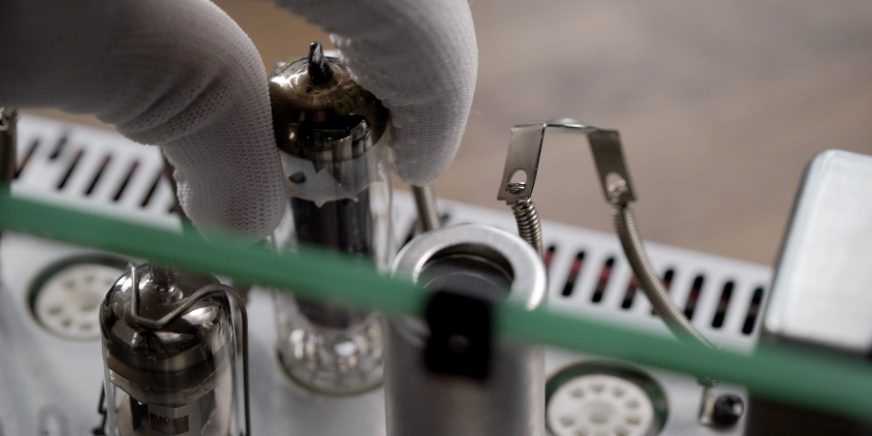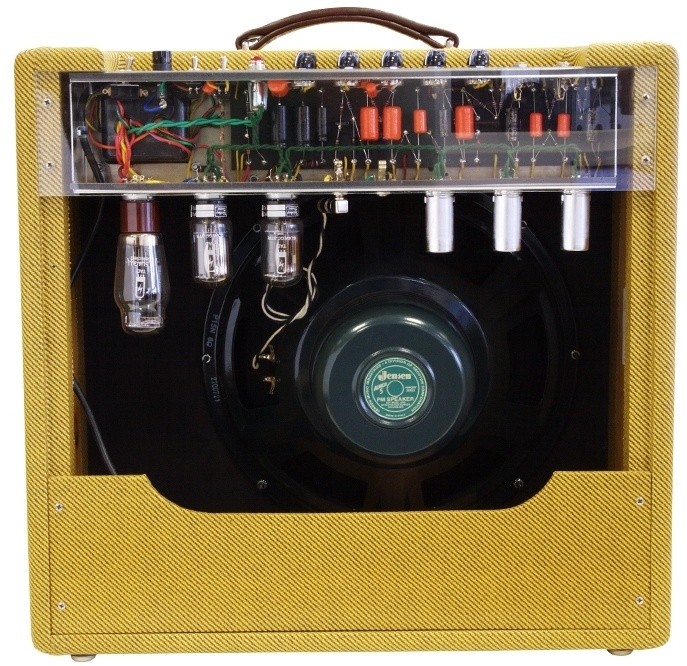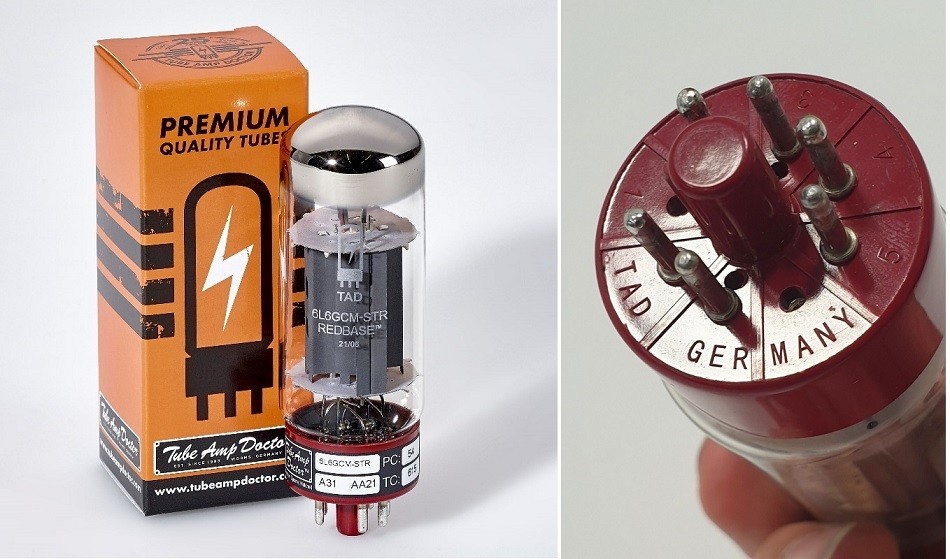Tube rolling – a fascination for music lovers worldwide. Whether it’s high-quality hi-fi equipment or instrumental amplifiers, tube amplifiers are and remain the number one choice when it comes to high-quality sound. In addition to a natural and organic sound reproduction, valve amplifiers offer another feature that sets them apart from their competitors: by changing tubes, new subtleties and nuances in the sound can be brought out and varied. The term “tube rolling” refers to the frequent changing of vacuum valves. Today, we will take a closer look at this “hobby”.
Tube rolling – what does it mean?
The word refers to the regular practice of changing the vacuum tubes in a tube amplifier. Tube rolling does not involve replacing defective or aging vacuum tubes. Instead, it refers to the regular exchange of vacuum valves to modify and vary specific sound characteristics by using different types of valves from various manufacturers. Tube rolling aims to fine-tune sound characteristics and, at the same time, compensate for or adapt to the idiosyncrasies of the equipment.
The quick swapping and testing of preamp tubes and power tubes are applied in both the HiFi and instrumental worlds.
HiFi amplifiers
HiFi enthusiasts swear by the sound of valve amplifiers from various manufacturers. This is primarily due to the natural and organic sound reproduction. Therefore, high-quality HiFi equipment often includes preamplifiers and power amplifiers equipped with different types of tubes. Valve amplifiers provide their unique sound characteristics in HiFi equipment, subtly altering the sound of the original recording. So, when it comes to amplifiers, the focus is less on exact data replication and more on achieving an all-around impressive sound result.
Through tube rolling and the use of different valve types, specific nuances in music can be brought out. Clearer highs, deeper lows, or a general change in the sound profile can be achieved by swapping valves and optimizing the sound through variations in the components used. Tube rolling enthusiasts often perform numerous quick successive valve changes, allowing them to discern the differences between individual electron valves through A/B testing, thus continuing the quest for the perfect sound. Just like with instrumental amplifiers, the motto for tube rolling with HiFi amplifiers is: The journey is the destination.
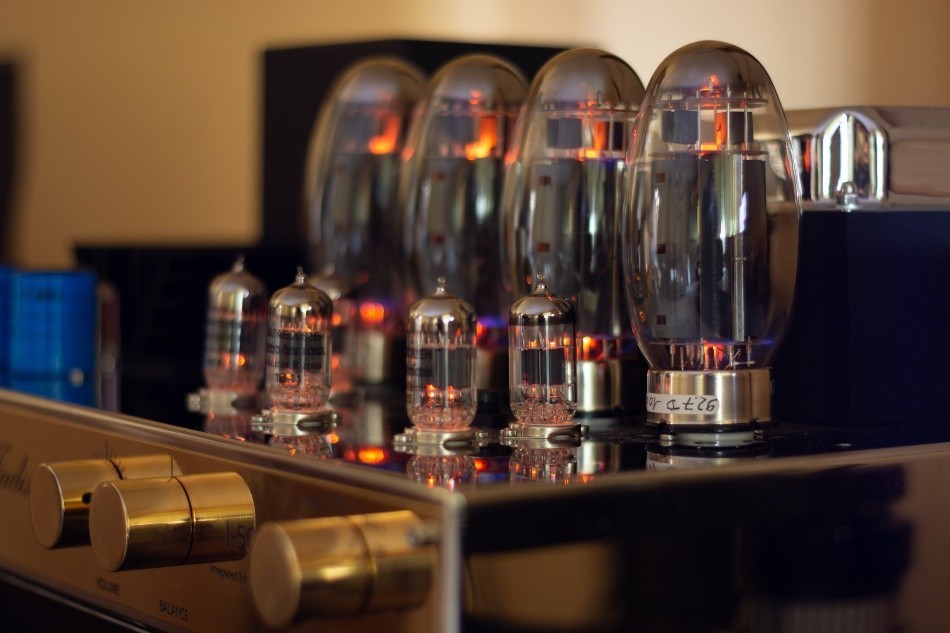
Guitar amplifiers
In contrast to HiFi amplifiers, guitar amplifiers operate in a different manner. While valve technology in guitar amplifiers also provides fantastic sound experiences, it’s the modulation of sound, rather than faithful music reproduction, that takes precedence here. By using different electron valves in the preamp and power amp stages, effects like overdrive and power stage distortion can be perfectly matched. Similar to HiFi enthusiasts, for fans of guitar amplifiers, the journey is the destination. Many different electron valves yield different results in one and the same amplifier setup, and these results can be further refined by experimenting with combinations of test valves.
Tube rolling vs. tube replacement
As mentioned earlier, tube rolling is not merely the replacement of defective electron valves, but rather the process of trying out different valves from various manufacturers. There is ongoing debate among experts about the purpose and utility of tube rolling:
- On the one hand, it is undisputed that a specific valvecan emphasize certain sound characteristics.
- On the other hand, it must be noted that altering components within an existing setup often has only minimal effects on the end result.
The extent to which changing a valve results in an audible change in sound remains uncertain. However, one thing is clear: the engagement with different preamp and power tubes and the joy of comparing tubes in a valve amplifier are reasons enough for us to engage in tube rolling.

Changing made easy: Step-by-step instructions for replacing the vacuum tubes
Even though you want the process to be as quick as possible, you should wait for the preamp tubes or power valves to cool down before changing them. We do not take responsibility for burnt fingers during the exchange! To make tube rolling a successful experience, you should consider some tips beforehand:
Tube characteristics
Tube amps and their tubes share the basic functionality, but their characteristics can vary significantly. Making a rough assessment of the sound after tube rolling requires experience. It’s helpful to familiarize yourself with the sound characteristics of different valve types in advance. For example, a “hot” valve provides more distortion, while “cold” tubes offer more headroom. Depending on the desired sound, you should experiment and test with different options.
Technical requirements
The process of changing tubes is quite straightforward. However, you should check the technical requirements for the replacement to avoid any unpleasant surprises. Besides having the correct socket type, it’s essential to consider the bias setting. Bias regulates the operation of the vacuum valves and has a significant impact on the sound. Depending on the amplifier type, bias can be set automatically or may require manual adjustment. You can find details about bias adjustment here.
Comparison and keeping notes
Describing the sound of an amplifier is a challenging task, and we are well aware of it from our daily experience. Tube rolling enthusiasts experiment and keep records of their test results and listening impressions. The goal is to gradually refine the ideal sound of their amplifier. When test-listening, the subjective impression always plays a significant role. Therefore, it’s recommended to test various valve combinations multiple times and try them out in direct comparison to other setups.
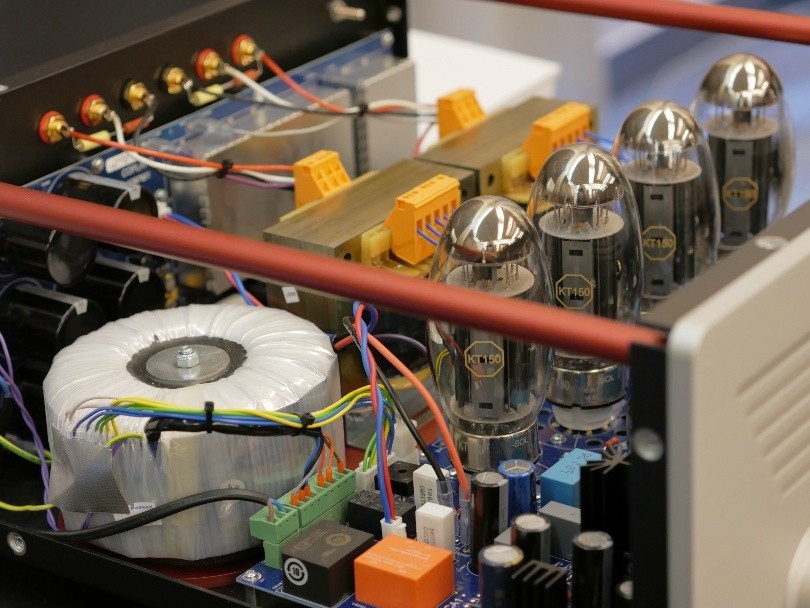
Tube rolling – conclusion
Regularly equipping the tube amp with new vacuum tubes is a hobby for many music enthusiasts who love tubes. Tube rolling is a subject of debate because it doesn’t involve replacing defective vacuum tubes but rather swapping, testing, and comparing intact tubes against each other. Whether changes in the valve configuration are always audibly noticeable is a matter of subjective listening impressions.
Nevertheless, the fascination of tube rolling has also captured us. It’s truly remarkable to see how changes in the preamp or power amp valve selection can result in significant tonal variations. As always, the best approach is to try it out for yourself, and you can find the appropriate tubes in our shop!
___________________________________________________________________________________________________________________________
Image sources:
Title image: © kustvideo – stock.adobe.com
Hifi amplifier with vacuum valves: © Diego – stock.adobe.com
Couple listening to music: © auremar – stock.adobe.com
Interior view of Hifi amplifier with vacuum valves: © trompinex – stock.adobe.com
 Tubeampdoctor Magazin
Tubeampdoctor Magazin
